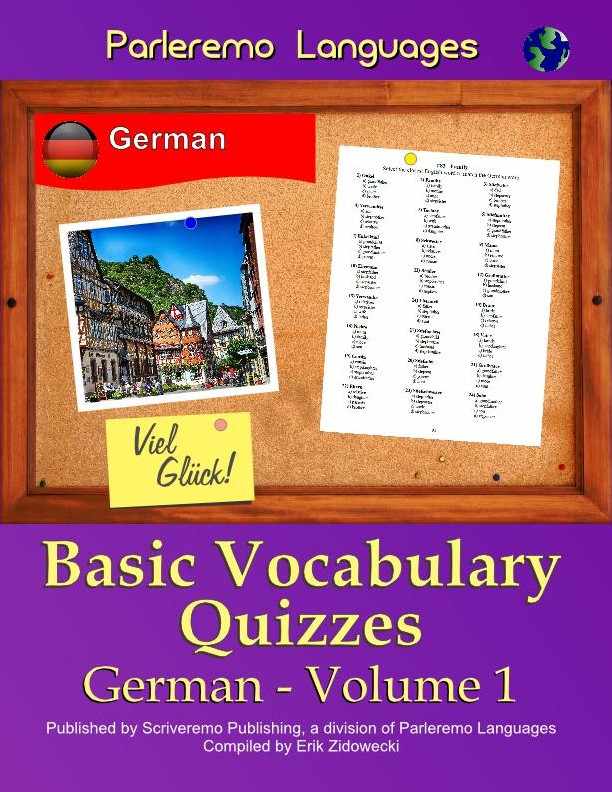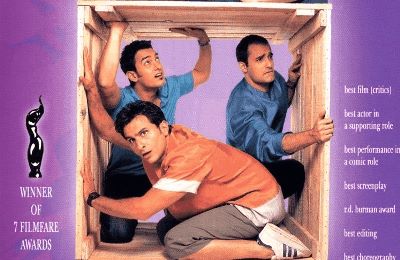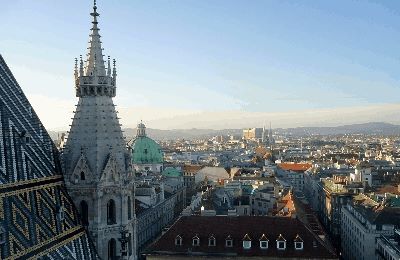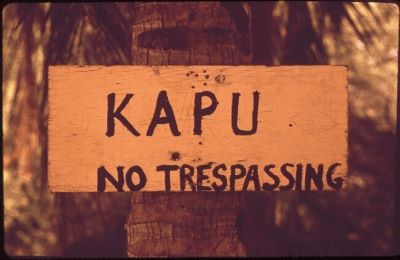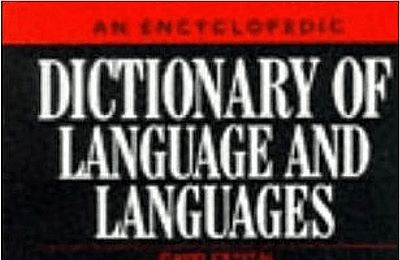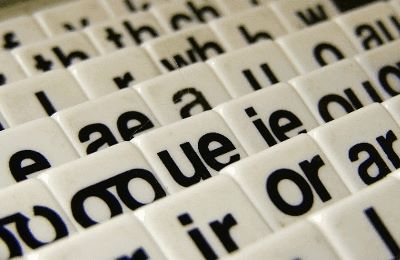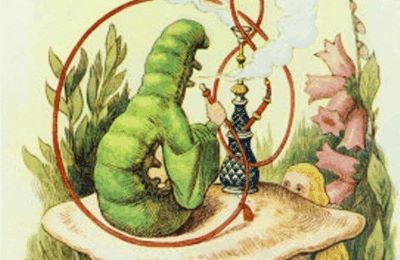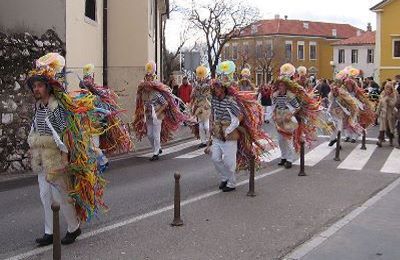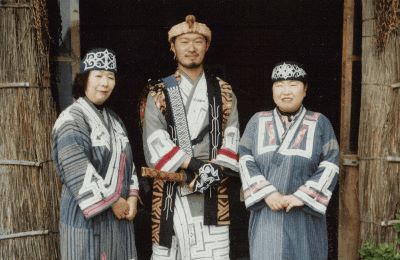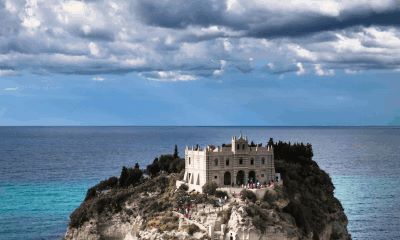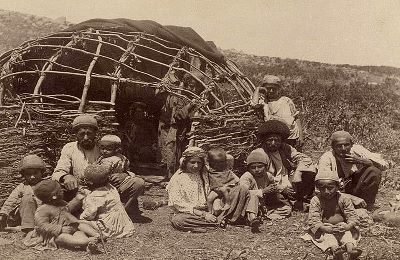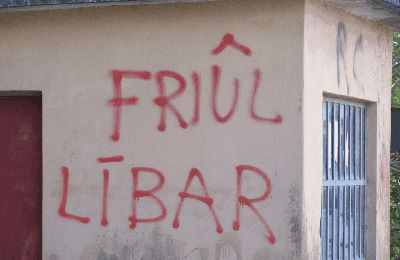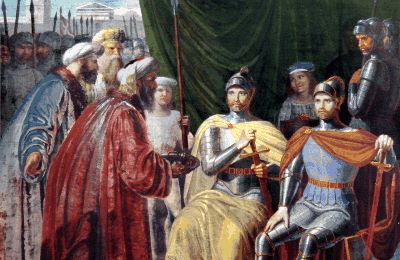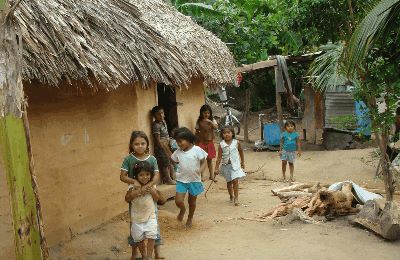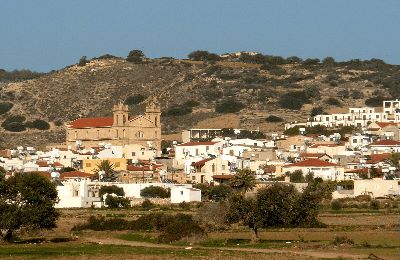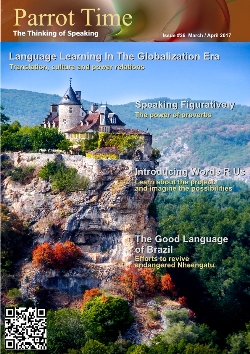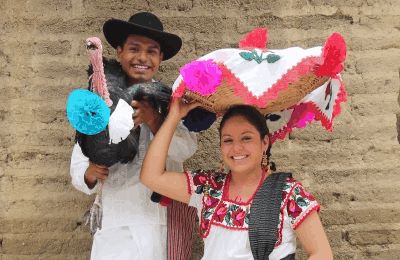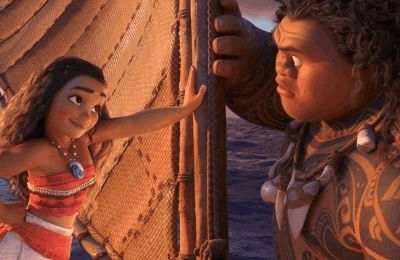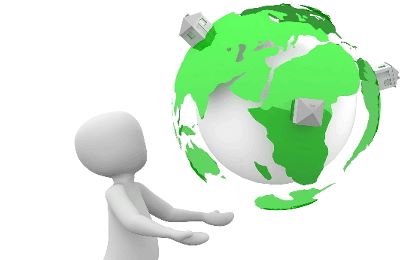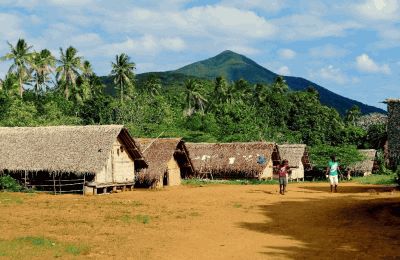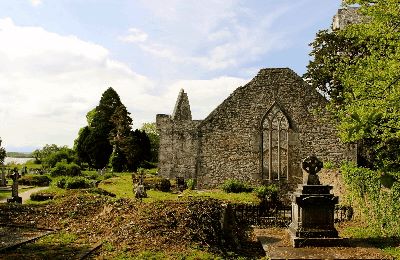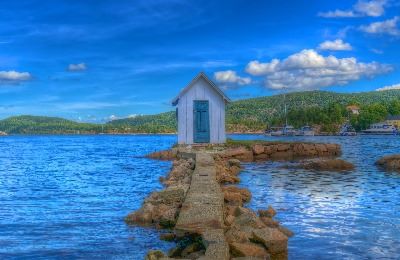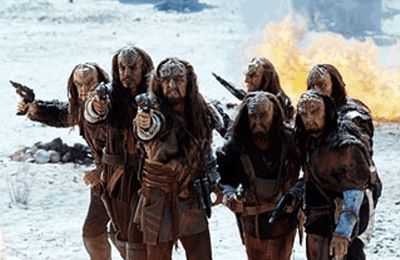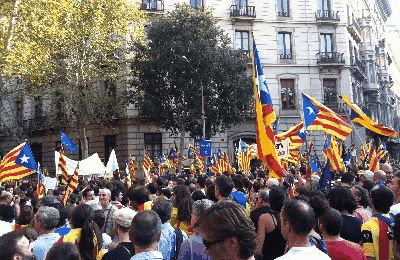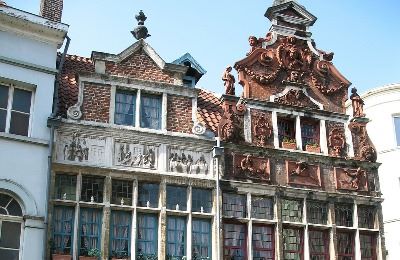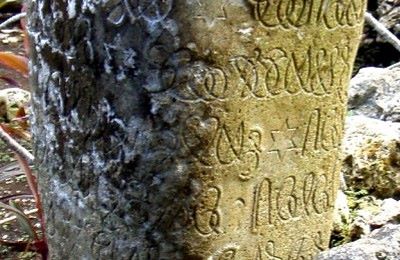
|
This month's languages in peril belong to Native American Indians. The Yuman branch of languages can be found among the people living in southern California and northern Mexico, along a strip of land called the Baja California Peninsula, which is officially part of Mexico. The languages here can be broken into what is called "Core Yuman" and two other languages - the now extinct Cochimí and the endangered Kiliwa. Core Yuman is divided into the three groups of Delta–California Yuman, River Yuman, and Pai. Most of these languages are endangered, but we will be focusing on just Kiliwa, Paipai, Kumeyaay, and Cocopah. They have been around for thousands of years, but suffered when the Spanish started settling the New World. Kiliwa 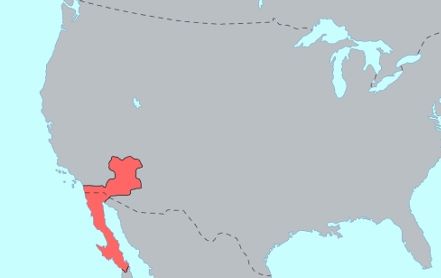 The Yuman language regions, as located in North America The first on our list of Yuman languages is Kiliwa. Spoken by the Kiliwa people in Baja California, it is the most southern of the Yuman languages. It is also the most distinct from the others. Kiliwa is also on the edge of extinction, with less than 50 speakers. Very little is known about the Kiliwa people before their first recorded European contact with Juan Rodríguez Cabrillo in 1542. Cabrillo had been working his way up the coast with three ships, finding and naming new regions while sometimes having conflicts with the indigenous tribes. During one of these skirmishes, Cabrillo was hurt and later died, after which his fleet returned to Navidad, Spain, with the results of his explorations going unnoticed. 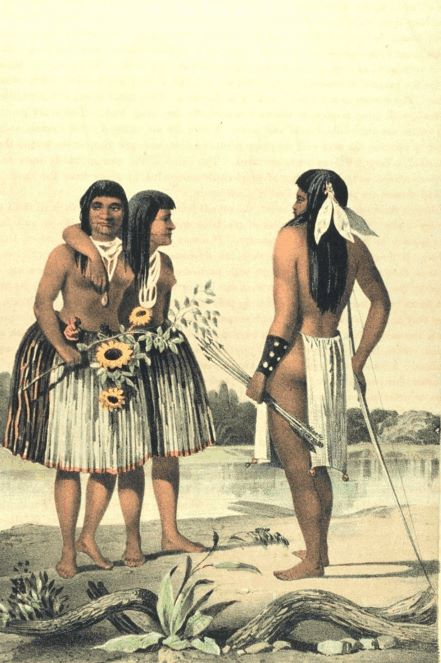 Native Americans of the Lower Colorado River Valley in Native Americans in 1857 Little further contact was made until Wenceslaus Linck, the last remaining Jesuit missionary explorer in Baja California arrived. He travelled overland and entered into Kiliwa territory in 1766. Mission Santo Domingo was founded a few years later in 1775, being placed among the Kiliwa people. As so often happens when explorers mixed with indigenous people, the natives were not immune to the diseases that were brought in, and the Kiliwa population quickly declined. Ironically, this decline led to the mission being used less and less, and it was finally abandoned in 1821. The settlers had wiped out the very people they were trying to convert. Peveril Meigs, an American geographer, studied the surviving Indian groups of northern Baja California. He estimated that the Kiliwa population has originally been approximately 1300. By 1929, Meigs reported that only 36 adult Kiliwa people were still alive in three small settlements of the area. In another twenty years, that number had dropped to just 30. There is some debate by linguistic prehistorians about the origins of the people. Some believe they migrated to the Baja California Peninsula from the north, separate from the other members of the Yuman group. Others claim that they were natives of the region and had simply become differentiated from the other tribes around 2000-3000 years ago. There were never many Kiliwa people to begin with, and the settling of Europeans into their region practically destroyed them. Now, according to the Alliance for Linguistic Diversity, there could be just under 10 native speakers still alive, placing Kiliwa on the critically endangered list, with almost no hope of it being saved. Paipai 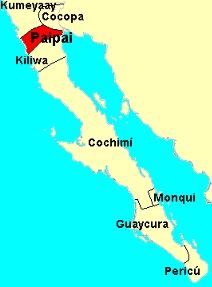 The Baja California Peninsula, showing the four language / tribe areas, with Paipai in red Moving up the coast, we find the Paipai people, whose language is also called Paipai. Paipai belongs to the Pai branch of the Yuman family, but it likely separated from the Northern Pai languages (Yavapai and Upland Yuman) many years ago, and the Pai branch itself separated from the other branches of Core Yuman between 1000 and 1700 years ago. The Paipai language has been documented by Judith Joël and Mauricio J. Mixco, who also published texts and studies of syntax. Even though it has separated from the Upland Yuman language, it is still very similar to it. The first European encounter with the Paipai people was not with Cabrillo, but with Spanish explorer Sebastián Vizcaíno when he was leading an expedition to map the northwest coast of Baja California in 1602. Spanish settlements were setup in the region in 1769 when another expedition, led by Gaspar de Portolà and Junípero Serra, came in. 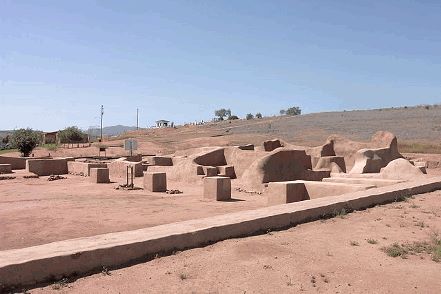 Some of the remains of the San Vicente mission Like the Mission Santo Domingo and the Kiliwa, the Dominican mission of San Vicente was founded in 1780 near the coast, in Paipai territory. It was a centre for the Spanish administration and military control of that region, and another mission, Santa Catarina, was established in 1797, near the border of Paipai and Kumeyaay territories. However, that one was eventually destroyed by some of the indigenous tribes in 1840. Based upon Meigs observations, it is estimated that there was a population of around 1800 Paipai natives during the time of these missions. Now, there are less than 200 speakers, with little hope of that improving, since the new generations are not learning the language. The remaining Paipai people live in a settlement called Santa Catarina (same as the destroyed mission, but not the same as Santa Catarina in Guanajuato), which they share with Kumeyaay and Kiliwa people. Paipai is considered to be severely endangered. Kumeyaay 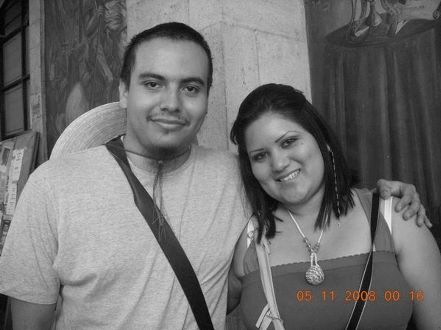 A modern day Mexican couple. The man is Mestizo and the woman is Paipai Continuing north, we come to the Kumeyaay people. Kumeyaay is one of the languages of Core Yuman, At one point, it was believed that Kumeyaay along with two other languages near it, Ipai and Tipai, were all simply dialects of a single language called Diegueño (after the mission of San Diego), but as late as 1990 they were identified as three distinct languages. There is still confusion now about how to call the people. Sometimes, Kumeyaay refers to both Ipai and Tipai together, other times as a separate tribe. The name Kumeyaay means "those who face the water from a cliff", while both names Ipai and Tipai mean "people". What is a Mission? The word "mission" has two basic meanings. The first refers to a task or objective, as in "He was on a mission to retrieve the secret documents". The second meaning, which is the one used in this article when referring to exploration, is "a ministry commissioned by a religious organization to propagate its faith or carry on humanitarian work". When settlers moved into a region already inhabited by indigenous people, they would normally establish a place where priests and specific members of the church, called "missionaries" would live. From there, they would try to convert the local population to their religion, usually Christianity. The idea among the church followers was that they could "save" these people by making them accept their own beliefs. The view of the conquerors was that this would help control the population by replacing the tribal beliefs and culture. Part of this often included suppressing the local language. As can be expected, this conversion process was often met with violence, making missionary work dangerous. All too often, the missions were destroyed and the settlers there driven out or killed. There is evidence of human settlements going back as far as 12,000 years ago in the area that is now Kumeyaay territory. At one time, their land extended from the Pacific Ocean to Ensendada, Mexico, then from the Colorado River to Oceanside. They also probably lived in what is now Torrey Pines State Natural Reserve. By the time of their first European encounter, there were about 30 clans of Kumeyaay people. Their first encounter was with Cabrillo in 1542, when a group of the explorers approached a gathering of them. All but three of the Kumeyaay ran away. To these, the men gave small gifts, hoping it would make them friends. Later, however, when another group came ashore to fish, the Kumeyaay saw this as a threat and attacked them with arrows. When Vizcaíno came to the Kumeyaay territory in November 1603, he named the area "San Diego", after one of his ships. After travelling a short way inland, his men also encountered the Kumeyaay people, but the meeting went peacefully. When the Spaniards began setting up their missions in the later 1700s, they established Mission San Diego de Alcalá, and the local tribes got the name Diegueños. They also brought with them new flora and animals, which damaged the current ecology of the region. Mexico took over the land from the Spanish in the 1830s, but American settlers started unlawfully claiming the land for themselves in 1870. American President Ulysses Grant created reservations in 1875, and the Act for the Relief of Mission Indians was passed in 1891 to protect the surviving members of the Kumeyaay, Ipai, and Tipai. 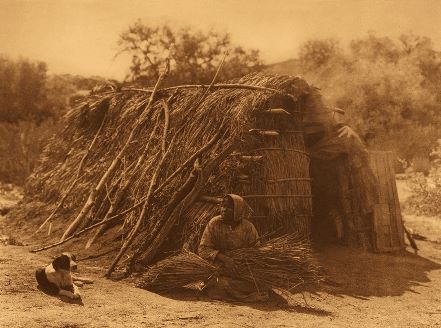 Kumeyaay woman in front of her traditional house at Campo There is no clear idea of how many Kumeyaay there were before the Spanish arrived. The estimates range from 3,000 to between 16,000 - 19,000. By the end of the 18th century, there were only between 3,000 and 9,000, and by 1828, that had dropped drastically to just 1711 Kumeyaay in the mission. Their numbers continued to dwindle rapidly, down to 1571 in 1860, then 1200 in 1900. According to the Bureau of Indian Affairs, a total of 1322 was said to be living by 1968. Some efforts are being made to save the language and culture. A series of reservations for the Kumeyaay is collectively known as the Kumeyaay Diegueño Nation, and there is the Kumeyaay Community College there to help promote and support cultural identity and sovereignty. The main focus is on the Kumeyaay language, philosophy and art. It might be helping. As of 2010, there are an estimated 3000 Kumeyaay in the reservations, but the actual number of fluent speakers is much fewer, with between 40 and 50 as of 2011. This puts Kumeyaay on the critically endangered list. Cocopah On the border of both Kumeyaay and Paipai territories is the region of the Cocopah people. The Cocopah language is part of the same branch as Kumeyaay but is not mixed in with the same group as Ipai-Kumeyaay-Tipai. The Cocopah people call themselves "Xawiƚƚ kwñchawaay" or "Those Who Live on the River", referring to the Colorado River. A group of the explorers approached a gathering of them. All but three of the Kumeyaay ran away. To these, the men gave small gifts, hoping it would make them friends. The first contact with the Cocopah people with Europeans is attributed to Spanish explorer Hernando de Alarcón when he sailed into the Colorado River delta in 1540. He was actually attempting to meet up with another explorer, Francisco Vasquéz de Coronado's, but that did not happen because Coronado never arrived. The Cocopah were also mentioned specifically in the records of another expedition led by Juan de Oñate in 1605. The purpose of this, his last expedition, was to find a supply port for New Mexico, as an alternative to having to transport everything overland. Oñate encountered numerous tribes during his explorations, many of which were chronicled in Historia de la Nueva México ("The History of New Mexico"), one of the first travel journals to be published, in the form of an epic poem about Oñate's activities. Today, the Cocopah people of the United States are part of the Cocopah Indian Tribe, living mainly on the Cocopah Reservation, which was established in 1917. There, they established their first Constitution and Tribal Council in 1964. 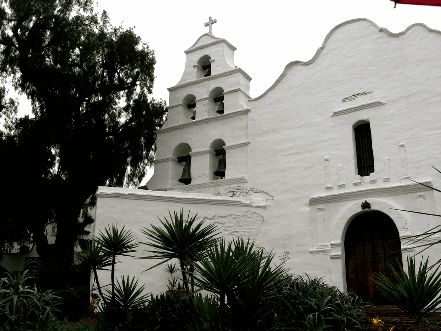 Mission San Diego de Alcala Of all these languages, Cocopah perhaps has the best chance of surviving due to the amount of effort being put into its revival. By the end of the 1990s, it was spoken by fewer then 900 people, and so the Cocopah Museum began offering language classes. Until the 1970s, Cocopah had no alphabet, so a student created one as part of a university dissertation. It proved to be inadequate, however, and so another created by the tribe at the start of the 21st century. New words have had to be added to the language for modern objects. By 2010, according to the US Census, there were around 1,000 members living and working in the Reservation. Even with the current attempts to save the culture and languages, Cocopah is considered an endangered language. On the Edge Whenever Europeans have moved into territories already inhabited by native tribes, it is the indigenous people that suffer for it. The population of the people listed were already small before contact with the Spanish, and after that, they found themselves brought to the edge of extinction. Sadly, as it is with most endangered languages, they are not likely to be revived enough to survive, and will likely be totally gone within the next twenty years. |
| Languages in Peril - Yumans on the Edge | ||||||||||||||||||||||||
| Writer: | Lucille Martin | |||||||||||||||||||||||
| Images: | ||||||||||||||||||||||||
| ||||||||||||||||||||||||
| Sources: | ||||||||||||||||||||||||
| ||||||||||||||||||||||||
All images are Copyright - CC BY-SA (Creative Commons Share Alike) by their respective owners, except for Petey, which is Public Domain (PD) or unless otherwise noted.
|
Searching for language resources? Scriveremo Publishing, has lots of fun books and resource to help you learn a language. Click the link below to see our selection of books, availlable for over 30 langauges!
| |
comments powered by Disqus
